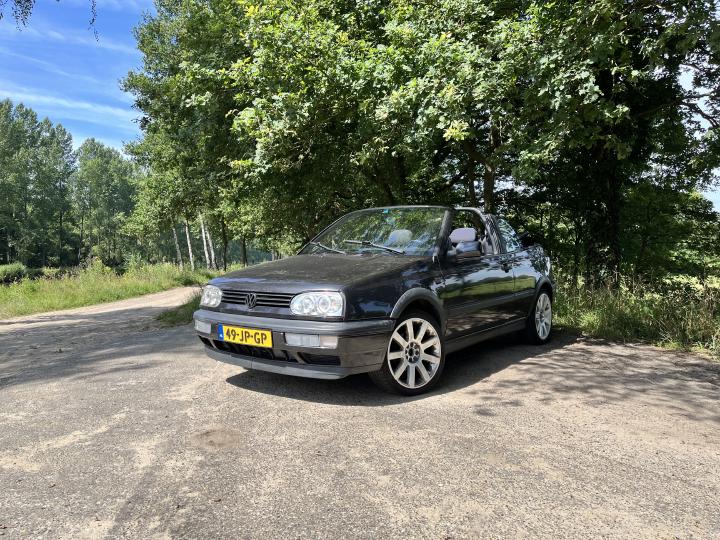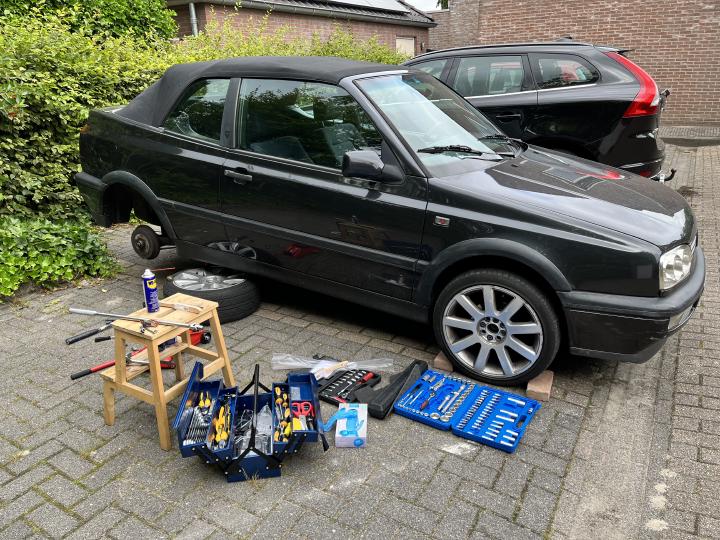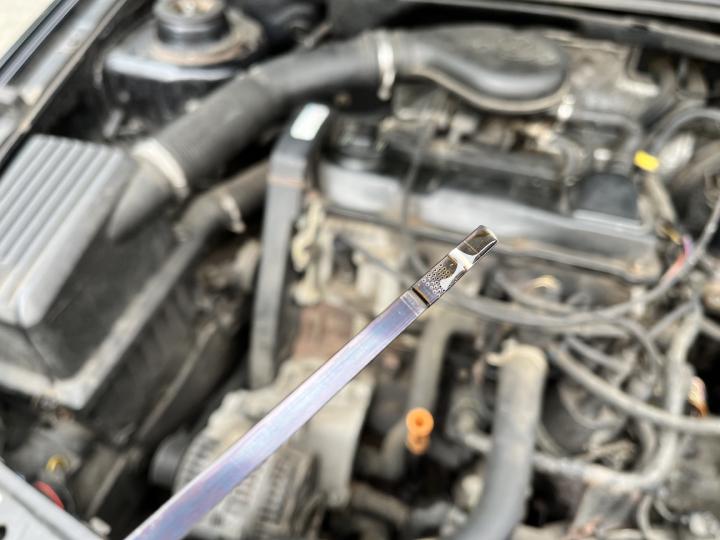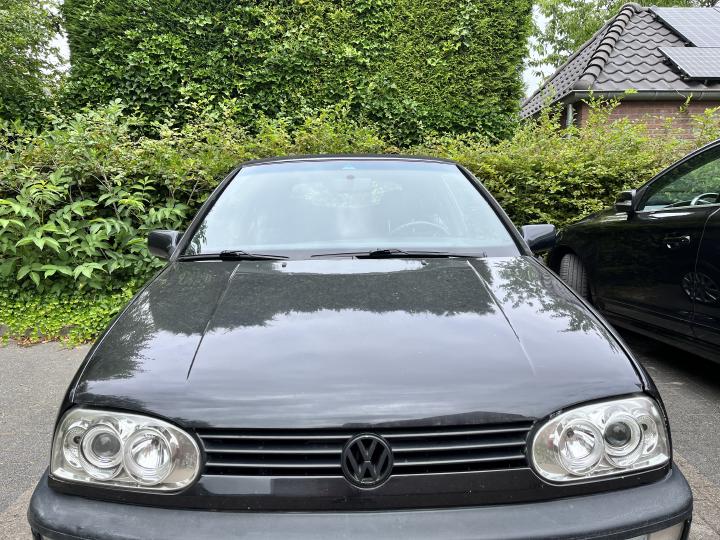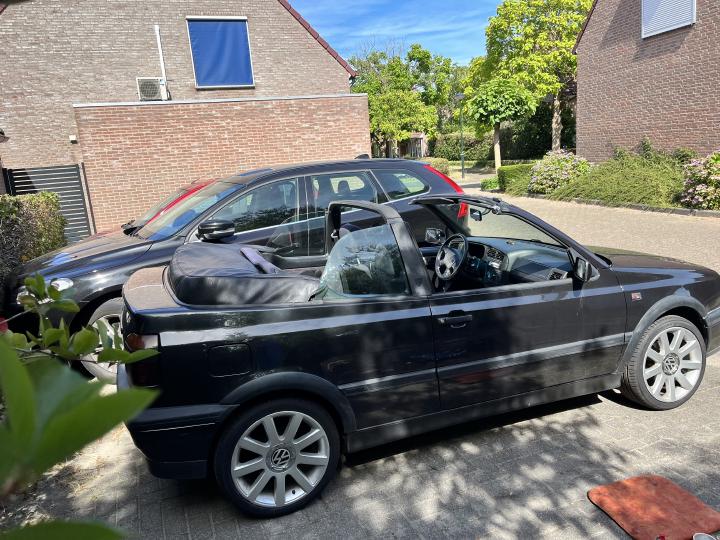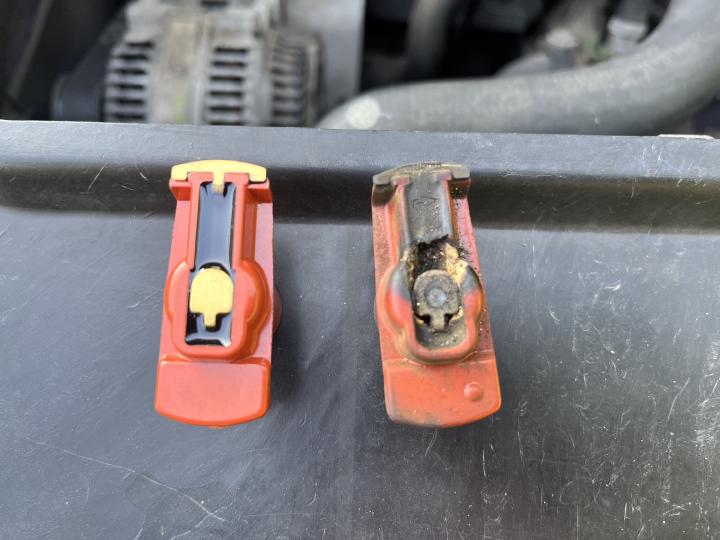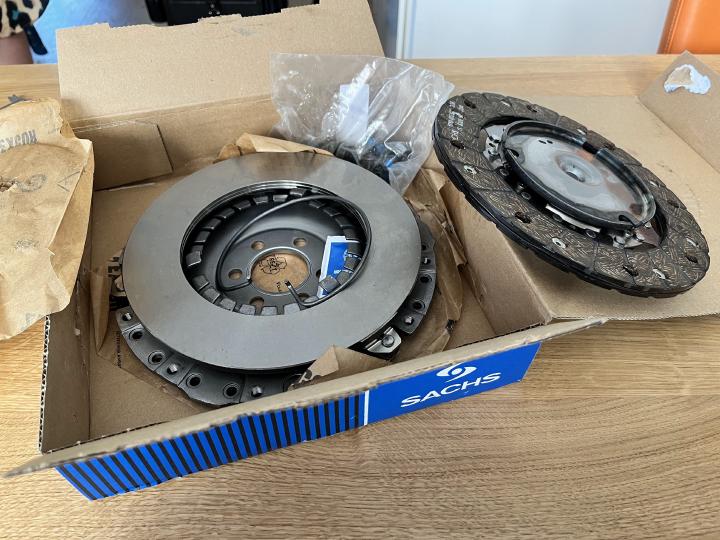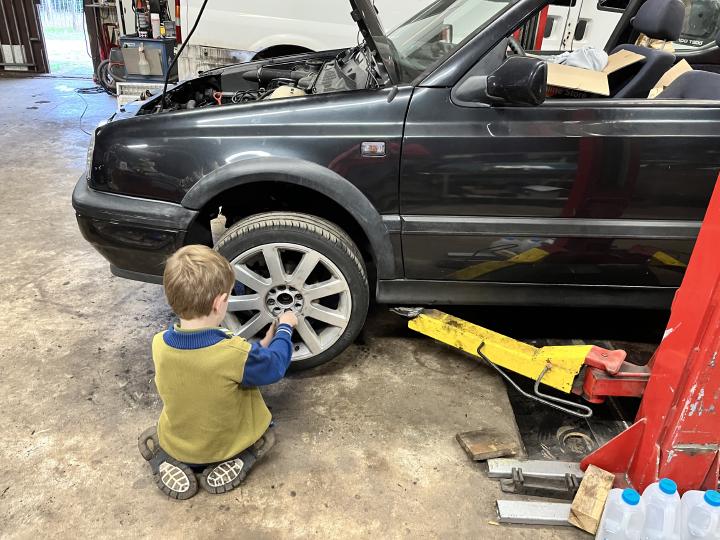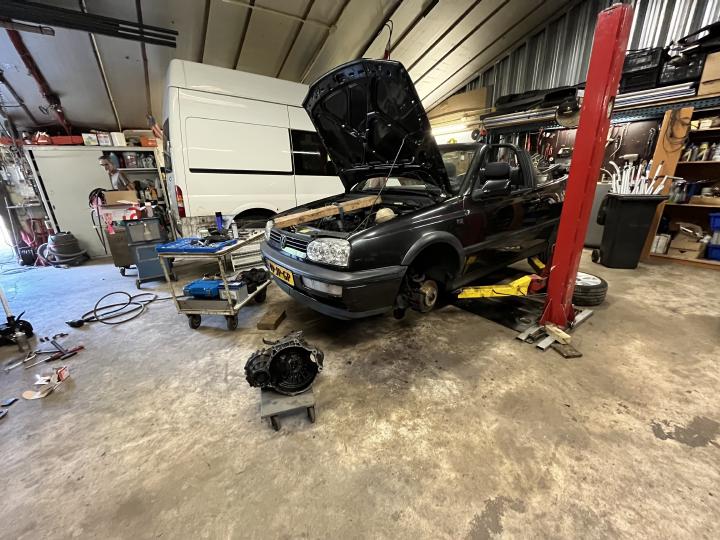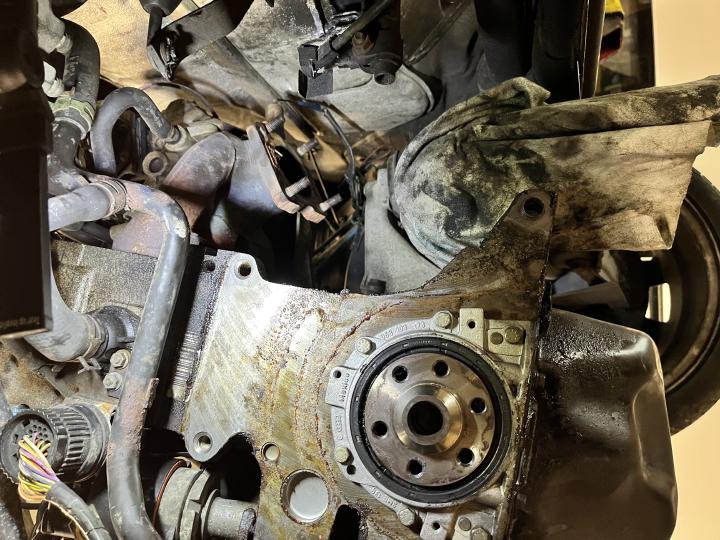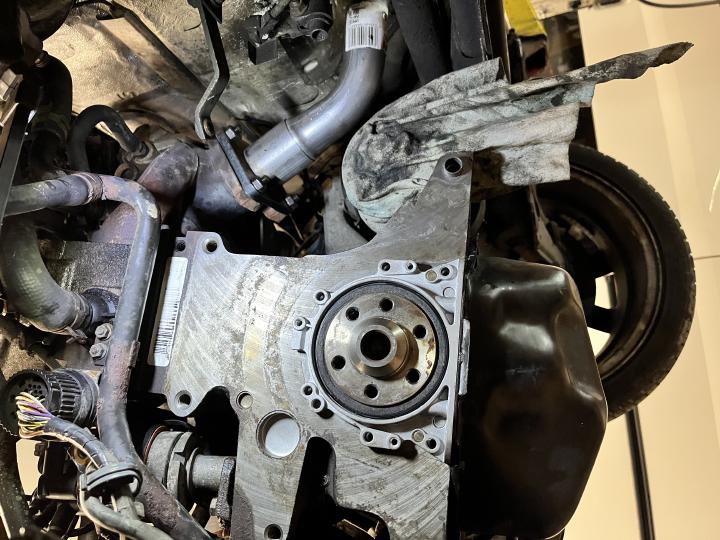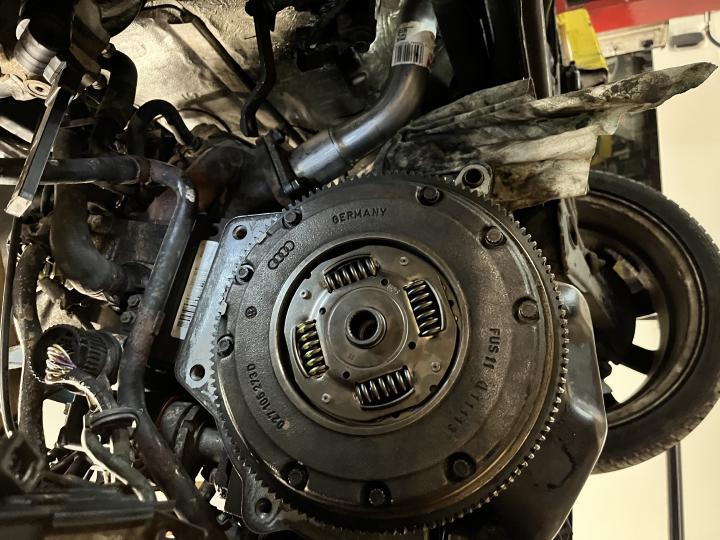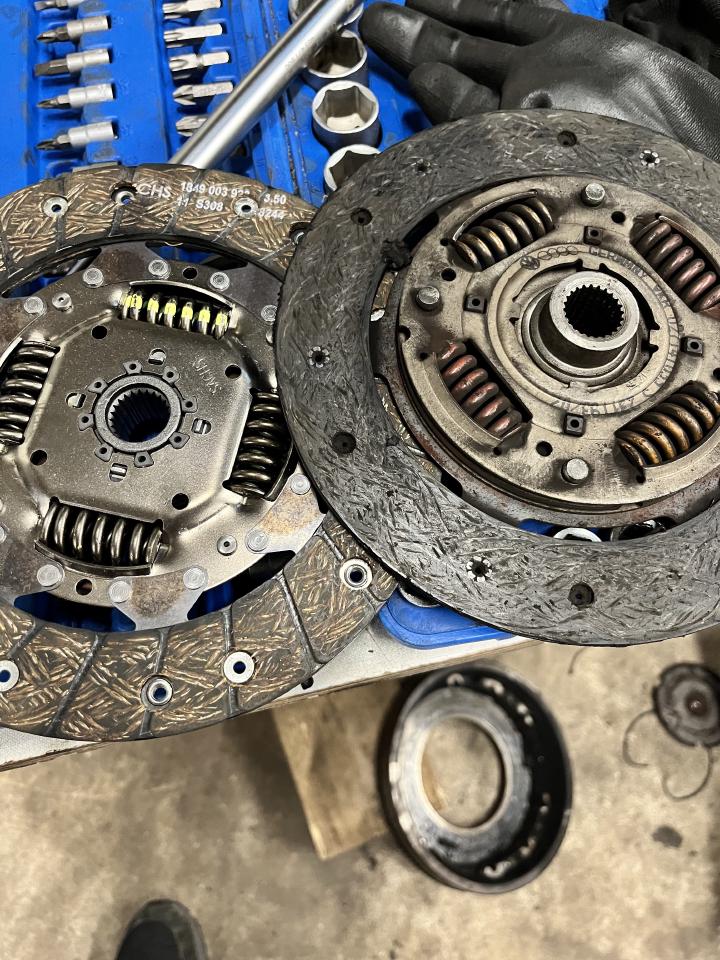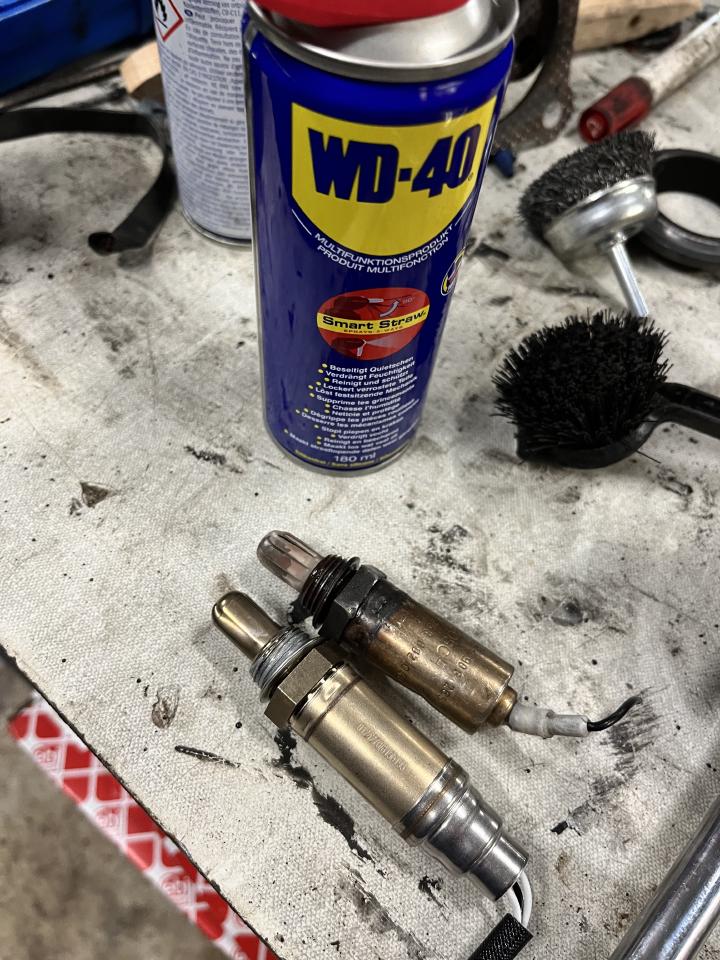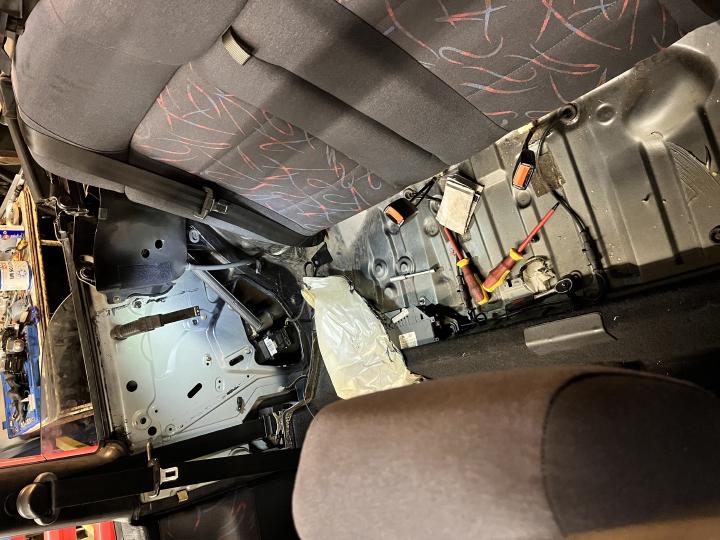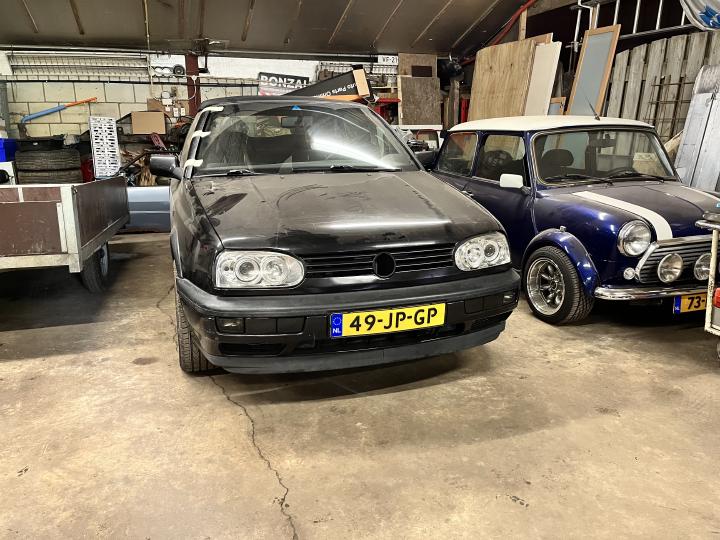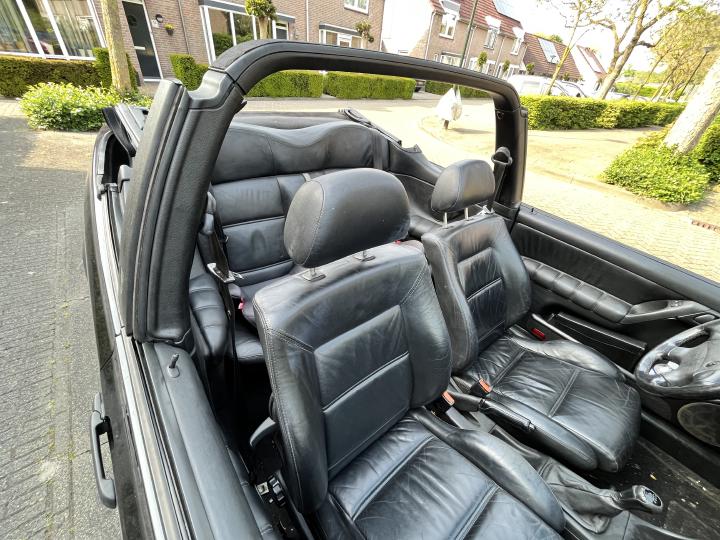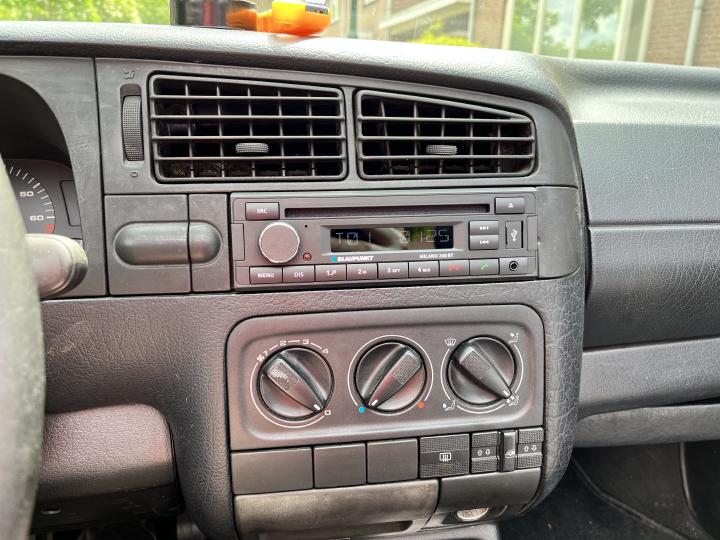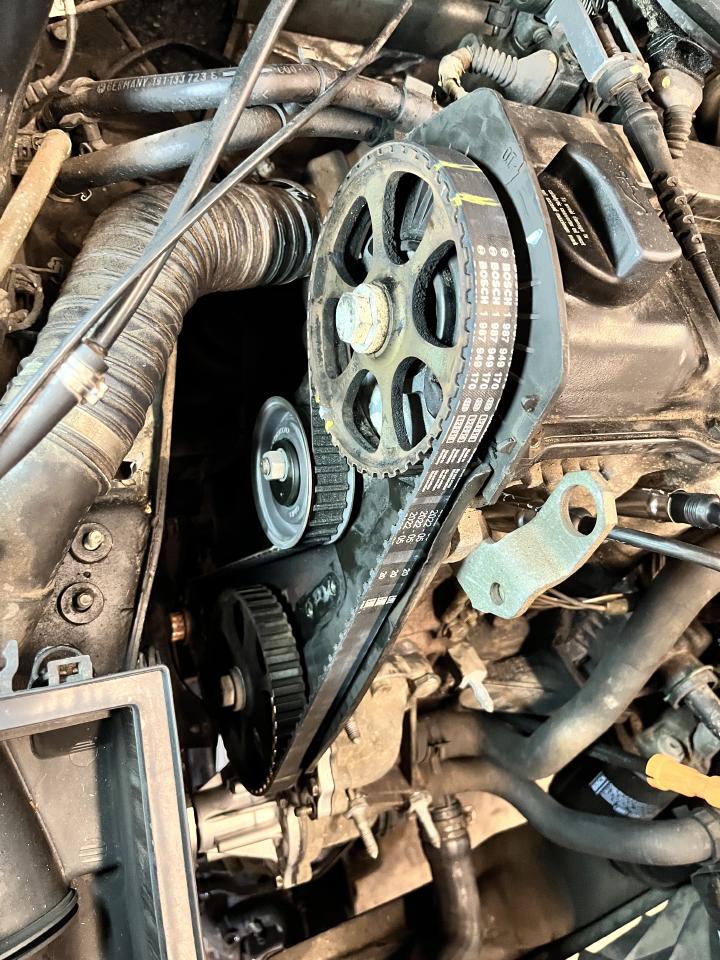Volkswagen Golf III Cabrio (1994)
Any of my friends or co-workers will tell you I’m a nerd. I like technical stuff. To get outside more, I decided my next technical challenge should be something that I do outdoors. The plan to convert a van into a camper was quickly dropped as I’m apparently the only person in the family who enjoys camping. I soon found that older Volkswagen Golf cars can be found for cheap, but will need work: precesily what I’m looking for.
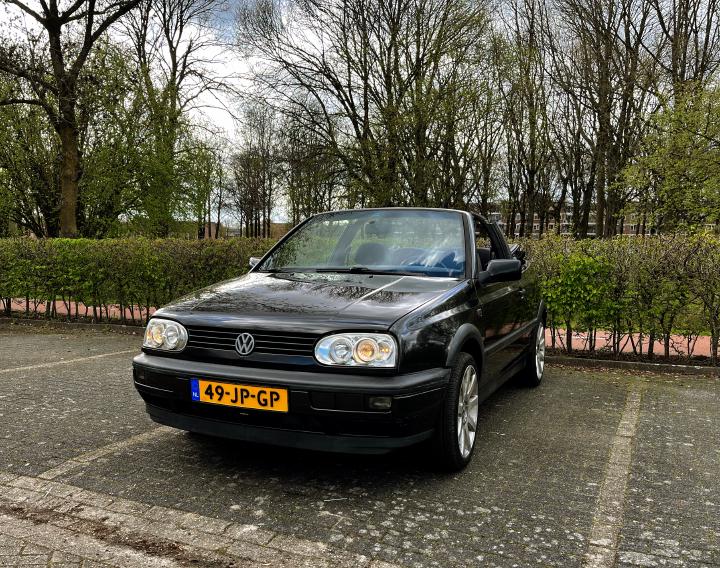
The car
- Volkswagen Golf III (Mk3) Cabrio
- Built in Osnabrück, Germany in 1994
- 1.8L Petrol engine (66KW, 90hp)
- Manual 5 speed gearbox (020)
- Hand-operated soft top
- 17" Alloy wheels
- 200k kilometers (±124 miles) on the clock
The problems
With a car of this vintage you can expect things to be wrong with it. I try to keep a complete list of issues I find, when I fixed them and what the repair cost.
Most of the repairs and maintenance I will do myself. I either already have the proper tools or want to buy them anyway. I bought a Haynes VW Golf Repair Manual and watched a metric ton of Chrisfix Youtube videos. Also, I have some friendly mechanics in my network that I can ask for help if need be.
I cannot do everything myself because I lack the proper training or tools. Things like replacing tires, wheel alignment, and validating the exhaust system is airtight. I will also bring the car to my local mechanic for the required periodical vehicle inspection. This means they will check if the suspension, brakes, and exhaust are functioning correctly (after I’ve had my hands all over them).
Items marked with 🔧 are required to (safely) operate the vehicle.
Overall
- Pass mandatory yearly vehicle inspection in the Netherlands (APK)1 🔧
Exhaust system
- Middle muffler leaking; patched hole with Exhaust Putty 🔧
- Exhaust Putty already blown off, weld it shut
- End muffler rusted and leaking; replaced 🔧
- Have exhaust checked during APK1; all good 🔧
- Replace front pipe (from manifold to catalytic converter)
- Oxygen/Lambda Sensor,
00525 No signal - Intermittent; old sensor was dirty, replaced.
Engine and cooling
- Fuel hose going into Mono Motronic is leaking; tightened loose hose clamp 🔧
- Verify battery voltage; all good
- Verify battery charging voltage / alternator function; all good
- Clutch is
almostend-of-life; replaced clutch - Replace throw-out/release bearing; preventative
- Replace transmission oil; preventative
- Change oil and oil filter
- O-ring on the coolant flange on the engine block is leaking; replace flange
- Replace thermostat
- Replace temperature sensor
- Replace coolant reservoir and cap
- Flush and replace coolant
- Replace spark plugs
- Replace ignition coil
- Replace distributor cap and rotor
- Replace ignition cables
- Replace air intake filter
- Belts (there are three, timing, water pump + alternator and power steering)
Suspension and brakes
- Rear shock absorbers are dead; replaced 🔧
- Front shock absorvers are dead; replaced 🔧
- Rear brakes are rusty and old; replaced 🔧
- Front brakes are rusty and old; replaced 🔧
- Flush brake fluid (after replacing brakes) 🔧
- Replace old and worn tires; will be fixed by mechanic during APK1 🔧
- Get a wheel alignment; done
- Replace outer tie rods
- Fix front wheel camber / get a proper wheel alignment; planned
- Check what’s up with ABS. It’s not mandatory for a car of this vintage, but I’d be nice to figure out what’s going on:
01276 ABS Hydrolic Pump (V64) signal outside specifications; might be a relay or wire, but most likely it needs a new ABS pump. - Replace rear wheel bearings and brake drums; replaced
Bodywork
- Check for problematic rust; none found 🔧
- Replace worn-out gas cylinders for boot; replaced 🔧
- Fix key-locking mechanism driver side; kind-of fixed; manual operation passenger side, key-operation driver side.
- Check functioning of passenger side electric window; cleaned connector to actuator
- Check and repair rear electric windows; done!
- Align wipers correctly; re-aligned motor and wiper linkage
- Replace wipers 🔧
- Fix wiper interval, it’s not working; relay was loose, cleaned and re-installed.
- Check spring on hood locking mechanism; it’s working okay
- Fix power steering; topped up power steering fluid
- Fix damaged light control height adjust; ordered a replacement unit
- Repaint front bumper
- Check right fender for rust, possibly remove rust and repaint
- Replace grill; many tabs have broken off or are hot-glued; bought and painted a replacement.
- Touch up small paint issues
- Clean and polish all paint
- Restore trim parts
Miscellaneous
- Check speakers and wiring
- Check why FM reception sucks; antenna not connected to stereo
- Fix heater control unit, it’s only blowing hot air
- Clean HVAC ducts
- Replace interior filter; lol, it doesn’t have one.
-
Clean seatsReplace interior with full black leather set - Fix height adjustment on seats; WD-40 worked wonders
- Replace seat sliding guides (the plastic bits); replaced
- Clean engine bay; it’s as clean as it’s going to get
Note: disabled headlight range control
Some cars have headlight range control. Basically, if you’re car is carrying a heavy load, the main headlights can be adjust to avoid dazzling oncoming traffic. That’s a nice feature to have.
However, this car came installed with after-market headlight units. They look nice, but lack the motor for headlight range control.
Now, if you offer your car for inspection, and there’s a headlight range control, it’s expected to work. If it is there, but does not work, means your car will fail inspection. So, if you install headlights without range control (which is fine), then the button should also be disabled. It’s just, the way it has been disabled is not so nice. They could have just removed the wheel control. I think I’m going to look for an scrap light control unit that only has the instrument lighting wheel and not the headlight range control. That will look way nicer.
When looking at an online scrap parts site, I found a replacement light switch from a two door hatchback Golf Mk3 for only €10. This particular hatchback model did not come originally with height range adjust, so now it’s a perfect fit for my Golf.
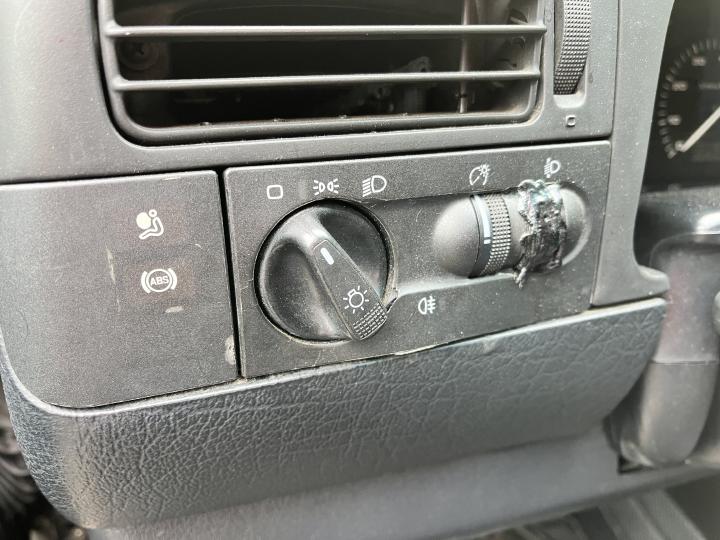
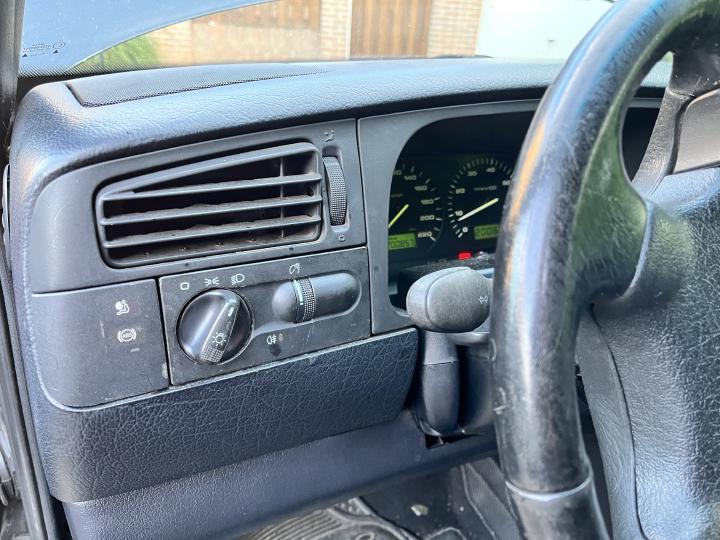
First road trip
On 24 September I joined a group of biker co-workers on a road trip throught the Belgian Ardenne region. Keeping up with motorcycles in that mountainous terrain was a bit of a challenge, but the Golf performed perfectly for over 400 km of road trip.
Reading error codes
This is a 1994 car. Volkswagen started shipping cars with OBD2 interfaces from 1995 onward. You can see this in your car: if your OBD connector is black it’s a pre-ODB2 version, the purple connector indicates OBD2.
Luckily, with a cheap KKL-compatible USB cable and VCDS Lite (free shareware works for reading and clearing codes), I was able to read the Engine and ABS systems for error codes.
Gallery
We all love pretty pictures…
